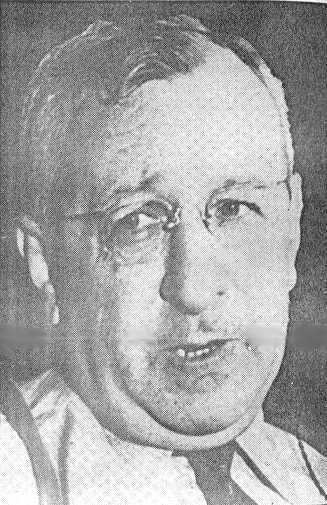Fields Biostatistics Name E. Jellinek | Known for alcoholism research Alma mater University of Berlin | |
 | ||
Education Humboldt University of Berlin Books The Disease Concept of Alcoholism | ||
Elvin Morton "Bunky" Jellinek (15 August 1890 – 22 October 1963), E. Morton Jellinek, or most often, E. M. Jellinek, was a biostatistician, physiologist, and an alcoholism researcher. He was born in New York City and died at the desk of his study at Stanford University on 22 October 1963. He was fluent in nine languages and could communicate in four others. Addiction researcher Griffith Edwards holds that, in his opinion, Jellinek's The Disease Concept of Alcoholism was a work of outstanding scholarship based on a careful consideration of the available evidence.
Contents
- Academic career
- Disease concept of alcoholism
- Recognition of placebo effect
- Selected publications
- References
Academic career
Jellinek studied biostatistics and physiology at the University of Berlin from 1908 to 1910. He then studied philosophy, philology, anthropology, and theology for two years at the Joseph Fourier University in Grenoble. He was also enrolled, apparently concurrently, at the University of Leipzig from 25 November 1911 to 29 July 1913, and from 22 November 1913 to 2 December 1914 for classes in languages, linguistics and cultural history.
During the 1920s, he conducted research in Sierra Leone and at Tela, Honduras. In the 1930s he returned to the U.S.A. and worked at the Worcester State Hospital, Worcester, Massachusetts, from whence he was commissioned to conduct a study for the Research Council on Problems of Alcohol. The eventual outcome of his study was the 1942 book, Alcohol Addiction and Chronic Alcoholism.
From 1941 to 1952, he was Associate Professor of Applied Physiology at Yale University. In 1941 he was managing editor of the newly established Quarterly Journal of Studies on Alcohol (now the Journal of Studies on Alcohol and Drugs). In 1952 he was engaged by the World Health Organization in Geneva as a consultant on alcoholism, and made significant contributions to the work of the alcoholism sub-committee of the W.H.O.'s Expert Committee on Mental Health.
Upon his retirement from the W.H.O. in the late 1950s, he returned to the USA. In 1958 he joined the Psychiatry Schools of both the University of Toronto and the University of Alberta, and in 1962, he moved to Stanford University in California, where he remained until his death.
Disease concept of alcoholism
In 1849, the Swedish Physician Magnus Huss (1807–1890) was the first to systematically classify the damage that was attributable to alcohol ingestion. Huss coined the term alcoholism and used it to label what he considered to be a chronic, relapsing disease.
Jellinek coined the expression "the disease concept of alcoholism", and significantly accelerated the movement towards the medicalization of drunkenness and alcohol habituation.
Jellinek’s initial 1946 study was funded by Marty Mann and R. Brinkley Smithers (Falcone, 2003). It was based on a narrow, selective study of a hand-picked group of members of Alcoholics Anonymous (AA) who had returned a self-reporting questionnaire. Valverde opines that a biostatistician of Jellinek’s eminence would have been only too well aware of the "unscientific status" of the "dubiously scientific data that had been collected by AA members".
In his 1960 book he identified five different types of alcoholism, and defined them in terms of their abnormal physiological processes:
In order to differentiate alcoholism not just diachronically, along a time line but also synchronically across groups of people, thus distinguishing types of alcoholics in a way that ran quite counter to the AA emphasis on the unity of all alcoholics, Jellinek came up with the idea of grouping different drinking patterns and naming them by giving each a Greek letter. One might think that the purpose of such a classification is to expand the range of alcoholism and include as many people as possible under the "disease concept"; but, contrary to what the title suggests, Jellinek's 1960 magnum opus in fact tries to limit the scope of the "disease concept", stating that most of the types described might be alcoholics, but they are not diseased – because they do not suffer from "loss of control".The "Jellinek curve" is derived from this classification of Jellinek, and it was named out of respect for Jellinek’s work. Jellinek later completely dissociated himself from this chart's representations; however it is still known as the "Jellinek curve".
Recognition of placebo effect
In post-war 1946, pharmaceutical chemicals were in short supply. A headache remedy manufacturer found that supplies of one of its remedy’s three constituent chemicals was running out.
They asked Jellinek, then at Yale, to test whether the absence of that particular chemical would affect the drug’s efficacy in any way. Jellinek set up a complex trial – with 199 subjects, divided randomly into four test groups – involving various permutations of the three drug constituents, with a placebo as a scientific control. Each group took a test remedy for two weeks. The trial lasted eight weeks, by the end of which each group had taken each test drugs, albeit in a different sequence. Over the entire population of 199 subjects, 120 of the subjects responded to the placebo, and 79 did not. The trial demonstrated that the chemical in question significantly contributed to the remedy's efficacy.
In the process of examining the data produced by his trial, Jellinek discovered that there was a significant difference in responses to the active chemicals between the 120 who had responded to the placebo and the 79 who did not. He (1946, p. 90) described the former group as being "reactors to placebo", and this seems to be the first time that anyone had spoken of either "placebo reactions" or "placebo responses".
